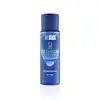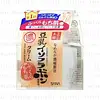What's inside
What's inside
 Key Ingredients
Key Ingredients

 Benefits
Benefits

 Concerns
Concerns

 Ingredients Side-by-side
Ingredients Side-by-side

Tranexamic Acid
AstringentHydrolyzed Hyaluronic Acid
HumectantSodium Acetylated Hyaluronate
HumectantMagnesium Ascorbyl Phosphate
AntioxidantTocopherol
AntioxidantCoix Lacryma-Jobi Ma-Yuen Seed Extract
Skin ConditioningButylene Glycol
HumectantDipropylene Glycol
HumectantHydrogenated Polydecene
EmollientPentylene Glycol
Skin ConditioningGlycerin
HumectantDiglycerin
HumectantLimnanthes Alba Seed Oil
Skin ConditioningSorbitan Stearate
EmulsifyingPolysorbate 80
EmulsifyingCarbomer
Emulsion StabilisingDisodium EDTA
Hydroxyethylcellulose
Emulsion StabilisingGlyceryl Caprylate/Caprate
EmollientXanthan Gum
EmulsifyingBehenyl Alcohol
EmollientPhenoxyethanol
PreservativeTranexamic Acid, Hydrolyzed Hyaluronic Acid, Sodium Acetylated Hyaluronate, Magnesium Ascorbyl Phosphate, Tocopherol, Coix Lacryma-Jobi Ma-Yuen Seed Extract, Butylene Glycol, Dipropylene Glycol, Hydrogenated Polydecene, Pentylene Glycol, Glycerin, Diglycerin, Limnanthes Alba Seed Oil, Sorbitan Stearate, Polysorbate 80, Carbomer, Disodium EDTA, Hydroxyethylcellulose, Glyceryl Caprylate/Caprate, Xanthan Gum, Behenyl Alcohol, Phenoxyethanol
Water
Skin ConditioningSqualane
EmollientStearic Acid
CleansingStearyl Alcohol
EmollientGlycine Max Seed Extract
Skin ConditioningButylene Glycol
HumectantTocopheryl Acetate
AntioxidantXanthan Gum
EmulsifyingMilk Ferment
Skin ConditioningCarbomer
Emulsion StabilisingSodium Hydroxide
BufferingAlcohol Denat.
AntimicrobialPalmitic Acid
EmollientCetearyl Alcohol
EmollientAluminum Starch Octenylsuccinate
AbsorbentGlycerin
HumectantCitric Acid
BufferingCyclohexasiloxane
EmollientBeeswax
Emulsion StabilisingMethylparaben
PreservativeGlyceryl Stearate
EmollientCyclopentasiloxane
EmollientWater, Squalane, Stearic Acid, Stearyl Alcohol, Glycine Max Seed Extract, Butylene Glycol, Tocopheryl Acetate, Xanthan Gum, Milk Ferment, Carbomer, Sodium Hydroxide, Alcohol Denat., Palmitic Acid, Cetearyl Alcohol, Aluminum Starch Octenylsuccinate, Glycerin, Citric Acid, Cyclohexasiloxane, Beeswax, Methylparaben, Glyceryl Stearate, Cyclopentasiloxane
Ingredients Explained
These ingredients are found in both products.
Ingredients higher up in an ingredient list are typically present in a larger amount.
Butylene Glycol (or BG) is used within cosmetic products for a few different reasons:
Overall, Butylene Glycol is a safe and well-rounded ingredient that works well with other ingredients.
Though this ingredient works well with most skin types, some people with sensitive skin may experience a reaction such as allergic rashes, closed comedones, or itchiness.
Learn more about Butylene GlycolCarbomer is a polymer of acrylic acid. Its main role is to create a gel consistency.
A high amount of carbomer can cause pilling or balling up of products. Don't worry, most products contain 1% or less of carbomer.
Glycerin is already naturally found in your skin. It helps moisturize and protect your skin.
A study from 2016 found glycerin to be more effective as a humectant than AHAs and hyaluronic acid.
As a humectant, it helps the skin stay hydrated by pulling moisture to your skin. The low molecular weight of glycerin allows it to pull moisture into the deeper layers of your skin.
Hydrated skin improves your skin barrier; Your skin barrier helps protect against irritants and bacteria.
Glycerin has also been found to have antimicrobial and antiviral properties. Due to these properties, glycerin is often used in wound and burn treatments.
In cosmetics, glycerin is usually derived from plants such as soybean or palm. However, it can also be sourced from animals, such as tallow or animal fat.
This ingredient is organic, colorless, odorless, and non-toxic.
Glycerin is the name for this ingredient in American English. British English uses Glycerol/Glycerine.
Learn more about GlycerinXanthan gum is used as a stabilizer and thickener within cosmetic products. It helps give products a sticky, thick feeling - preventing them from being too runny.
On the technical side of things, xanthan gum is a polysaccharide - a combination consisting of multiple sugar molecules bonded together.
Xanthan gum is a pretty common and great ingredient. It is a natural, non-toxic, non-irritating ingredient that is also commonly used in food products.
Learn more about Xanthan Gum